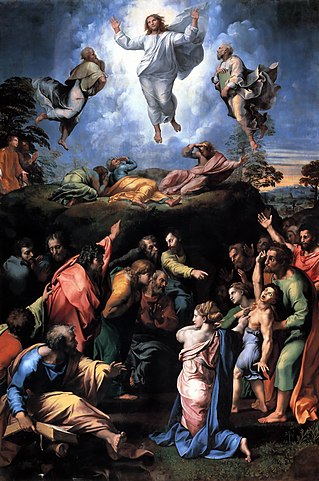The Clarity of Spiritual Beauty
The Clarity of Spiritual Beauty

The Latin adjective clarus means "clear, bright, shining, brilliant." It is present in our words clarity ("clearness of appearance" but also "clearness of thought or style; lucidity"), clarify ("to make clear; elucidate"), and "clairvoyant" (literally "a clear-seer"). But the Latin word has extended meanings which English does not clearly reflect. It can also mean "brilliant" in the sense of "renowned, illustrious, honorable, glorious."
At first glance, this combination seems strange. Physical "clarity" or "brilliance" is a quality that inheres in objects—like the luster of a diamond or the gleam of gold. A person's "renown", however, is a consequence of being known. Diamonds and gold really shine. People become famous because we "see" them. Our persistent gaze, not their inherent brilliance, is what makes them "illustrious".
But is there a sense in which a person can "shine" the way a diamond does—by inherent splendor or brilliance, by a kind of personal "clarity"?
I've been pondering that question while reading, with students and friends, St. Thomas Aquinas on "spiritual beauty" (pulchritudo spiritualis).
Thomas draws a close analogy between our experience of corporeal, or physical, beauty and our recognition of beauty which is of the spirit—i.e., non-corporeal, not consisting, or at least not only consisting in physical things.
He first notes, quoting Pseudo-Dionysius the Areopagite, that "God is called beautiful as being the cause of the harmony and clarity of all things" (Deus dicitur pulcher sicut universorum consonantiae et claritatis causa). Harmony refers to the quality of existing as an ordered whole—to a particular thing's or the entire universe's having parts organized in a rational order. Clarity describes the impression or appeal of that order upon our faculty of vision or comprehension.
Elsewhere, St. Thomas offers a wonderfully concise definition of beauty. Whereas the good is what appeals to our appetite—for we desire what we perceive as good—the beautiful pertains to the act of seeing or knowing: "Those things are called beautiful which give pleasure when seen" (pulchra dicuntur quae visa placent) (Summa Theologiae I, question 5, article 4).
But the kind of "seeing" St. Thomas has in mind includes more than simple perception of visible objects. For those who have both eyes and intelligence, another kind of sight is possible. Human beings are capable of seeing spiritual beauty—beauty which consists in a person's way of life, or actions, when they are well proportioned "according to the spiritual clarity of reason" (secundum spiritualem rationis claritatem).
Last month, I considered the quality of workmanship that seems an essential component in our human nature. Humans by nature have the capacity to produce beautiful works of handicraft. St. Thomas's notion of spiritual beauty implies a similar capacity that pertains to the whole of life. A human life itself, so it seems, can be a kind of artefact or work of art—an object of contemplation that arouses recognition and delight, one that shines with the clarity of spiritual beauty.
Links
Readers of Greek and/or Latin may enjoy Classics Every Day—a website created by James Patterson which posts a pair of passages every day, one Greek, one Latin. For example, this lovely pairing of Solon and Virgil.
Classics Every Day was an inspiration for my own project Daily Collection—which follows a similar formula: daily pairings of a Latin collect prayer with a Greek lection.
Paul Griffiths writes powerfully Against Human Flourishing.
Matthew Crawford has "some questions for the integralists".
Eve Tushnet writes insightfully on Fiducia supplicans.
Freddie deBoer applies the venerable maxim sic transit gloria mundi to sports.